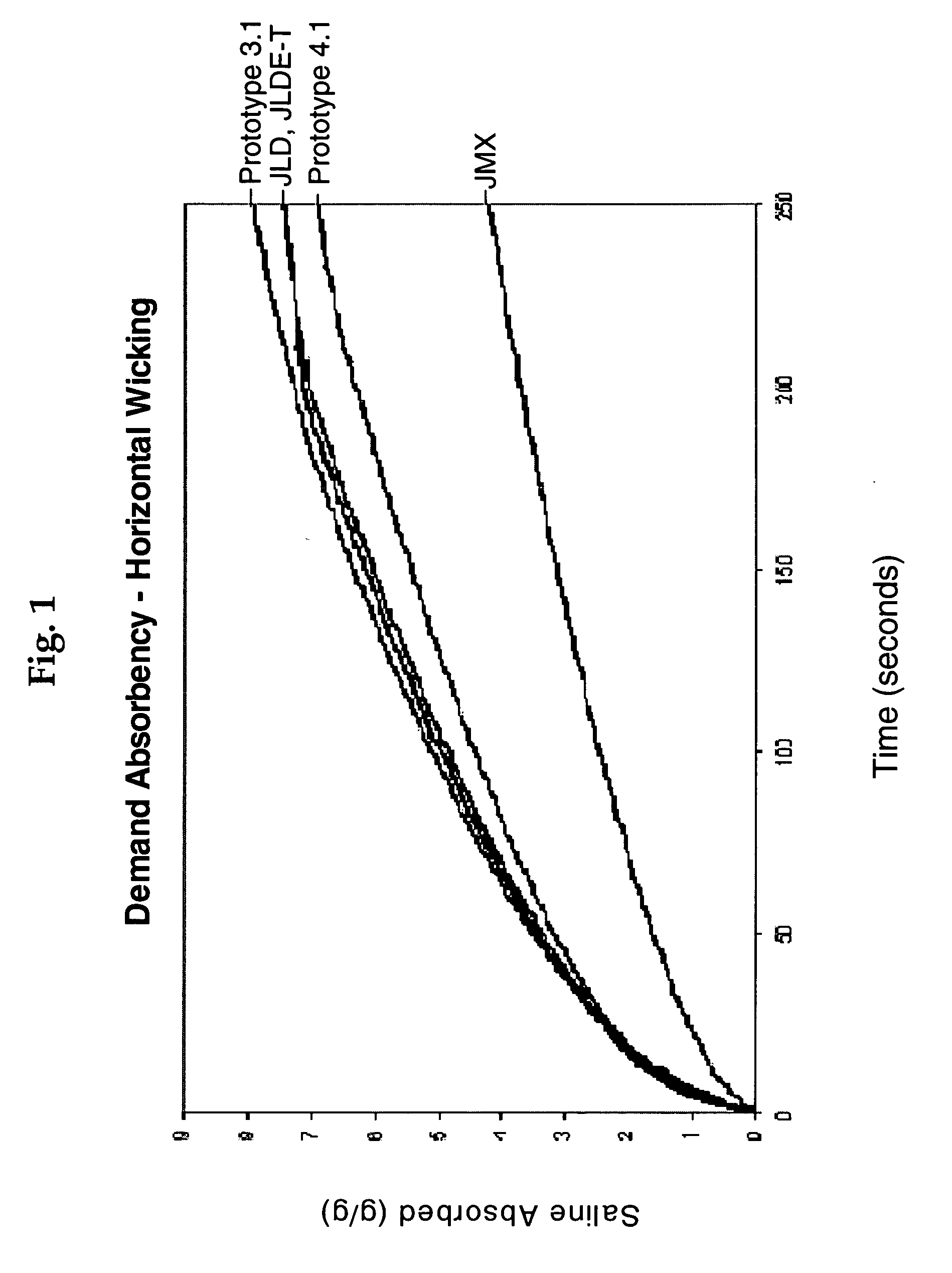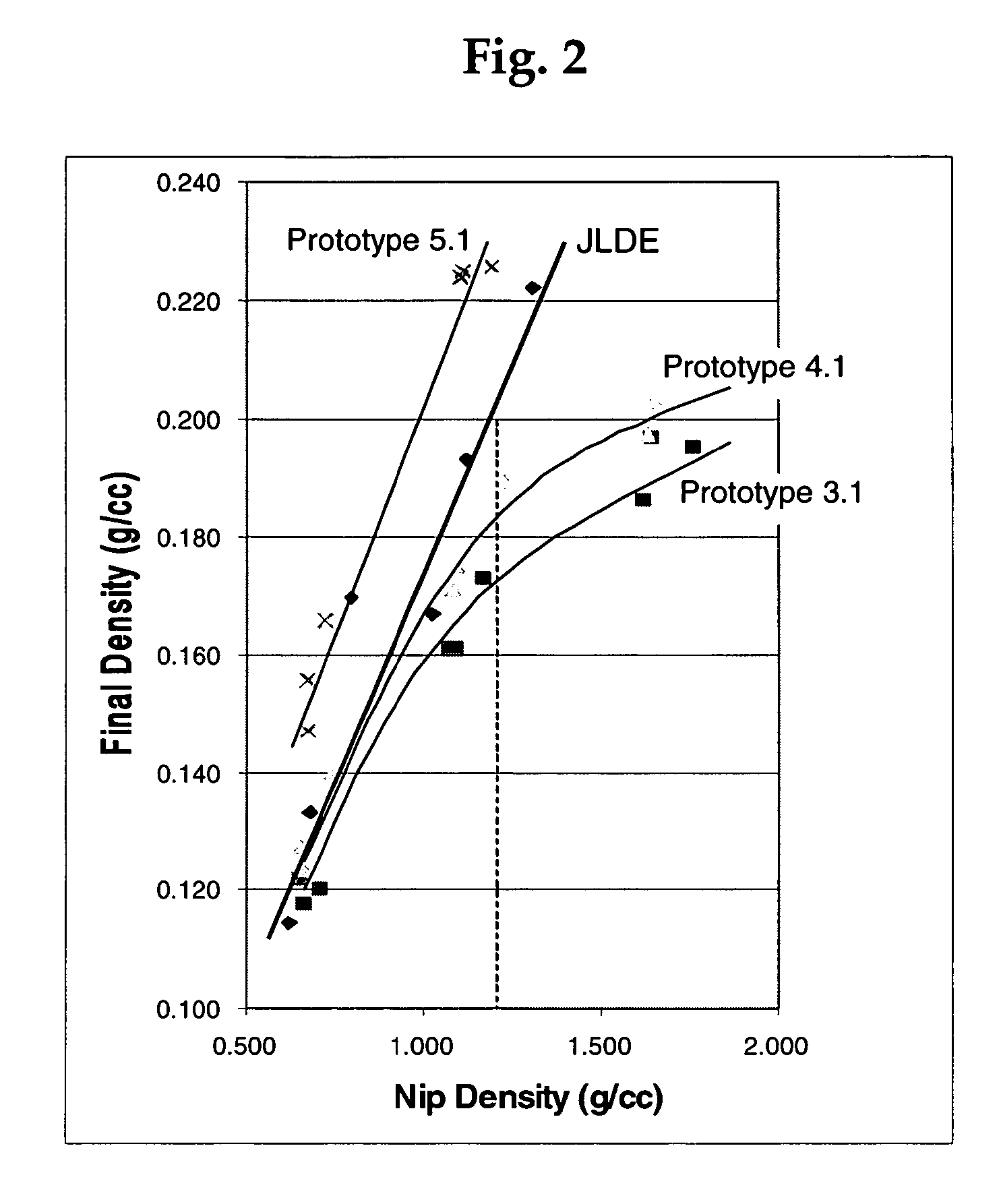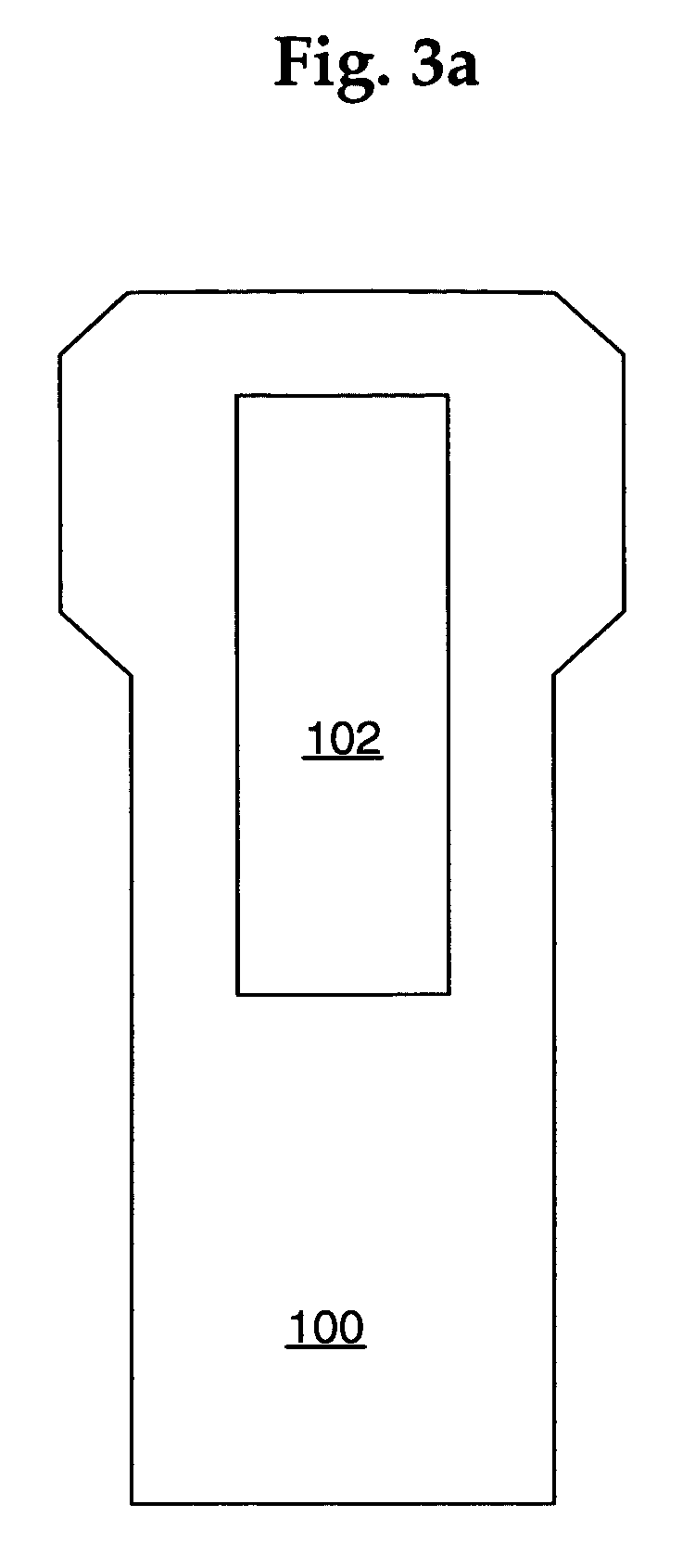Plasticizing formulation for fluff pulp and plasticized fluff pulp products made therefrom
- Summary
- Abstract
- Description
- Claims
- Application Information
AI Technical Summary
Benefits of technology
Problems solved by technology
Method used
Image
Examples
example 1
[0084] This example illustrates a representative method for making plasticized fluff pulp in roll form in accordance with an embodiment of present invention.
[0085] A plasticizing solution, containing 60 weight % of 1,4-CHDM (obtained from Eastman Chemical Company, Kingsport, Tenn.) in water was prepared. The plasticizing solution was applied to rolls of Rayfloc-JLD® (basis weight of 640 g / m2, commercially available from Rayonier, Inc., Jesup, Ga.) by spraying using a pilot scale K&M spraying system. The plasticizing solution was applied to the sheets at various levels to produce samples of plasticized fluff pulp having about 0.5 wt %, 1.0 wt %, 1.5 wt % and 2 wt % of 1,4-CHDM based on the pulp weight. The pulp samples treated with the plasticizing solution were placed in a room with a controlled humidity for at least 4 hours, and then evaluated for absorbency and energy of defiberization (Kamas energy). The absorbency results are summarized in the following table.
TABLE 1Absorbent...
example 2
[0086] This example illustrates a representative method for making plasticized fluff pulp in roll form in accordance with an embodiment of the present invention.
[0087] A plasticizing solution containing equal amounts by weight of 1,4-CHDM (40 wt %) and triacetin (40 wt %, obtained from Vitusa Products Inc., Berkeley Hts., N.J.) in water was prepared. The plasticizing solution was sprayed onto rolls of Rayfloc-JLD® pulp, using the method described in Example 1. The solution was sprayed at various levels to afford about 0.5 wt %, 1.0 wt %, 1.5 wt % and 2.0 wt % of the plasticizing formulation (1,4-CHDM and triacetin) based on the pulp weight. The plasticized pulp samples were placed in a room with a controlled humidity for at least 4 hours, and then evaluated for absorbency and energy of defiberization (Kamas energy). The absorbency results are summarized in Table 2 below.
TABLE 2Absorbent properties of plasticized fluff pulp ofthe present invention treated with various amountsof th...
example 3
[0088] In this example, fiber quality and defiberization energy were evaluated for selected samples of the plasticized fluff pulps prepared as described above in Examples 1 and 2. The results are summarized in Table 3 below.
TABLE 3Fiber Quality and Kamas Energy for plasticizedfluff pulp samples of the present inventionKnots andKamas EnergySamplenits (%)(Wh / kg)Rayfloc-9.943.44JLD ®B6.238.4E6.939.2F7.533.4G7.130.4H5.030.3
PUM
| Property | Measurement | Unit |
|---|---|---|
| Fraction | aaaaa | aaaaa |
| Fraction | aaaaa | aaaaa |
| Percent by mass | aaaaa | aaaaa |
Abstract
Description
Claims
Application Information
 Login to View More
Login to View More - Generate Ideas
- Intellectual Property
- Life Sciences
- Materials
- Tech Scout
- Unparalleled Data Quality
- Higher Quality Content
- 60% Fewer Hallucinations
Browse by: Latest US Patents, China's latest patents, Technical Efficacy Thesaurus, Application Domain, Technology Topic, Popular Technical Reports.
© 2025 PatSnap. All rights reserved.Legal|Privacy policy|Modern Slavery Act Transparency Statement|Sitemap|About US| Contact US: help@patsnap.com



